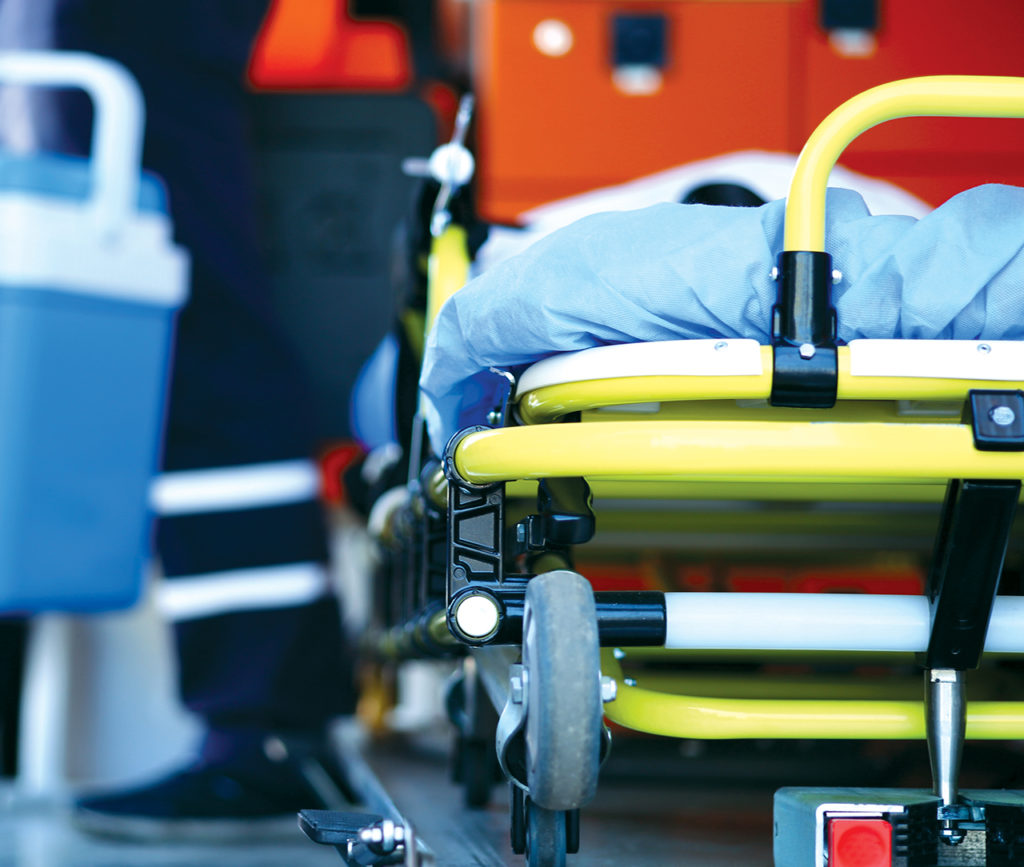About Emergency Preparedness

It’s time to change the way California thinks about disaster response. The COVID-19 pandemic showed that hospitals can quickly mobilize to provide flexible approaches to patient care during a disaster. The state must draw upon these lessons to prepare differently so the next crisis will be less severe. Given California’s size and complexity, the health care disaster response system of the future must be nimble enough to respond to any catastrophe. View more information on hospital disaster preparedness.
Hospital Assessment and Recovery Guide
This guide is designed to help organize the initial assessment of a hospital upon return after an evacuation/closure due to an emergency event. The specific assessments are meant to be conducted by hospital staff to assess the level and locations of damage sustained by the hospital, and provide information that will be needed to create the full recovery plan. This guide will be particularly useful for assessing a hospital that has sustained significant or widespread damage.
Hospital Evacuation Decision Guide
This Hospital Evacuation Decision Guide was developed by AHRQ, the lead Federal agency charged with supporting research designed to improve the quality of health care, reduce its cost, address patient safety and medical errors, and broaden access to essential services.
Evacuation and Shelter-in-Place Guidelines for Health Care Entities
Evacuation of a health care facility may be necessary following an emergency such as a facility fire or damage from a natural disaster such as an earthquake or flooding. The decision to evacuate a health care facility will be based on the ability of the facility to meet the medical needs of the patients. Immediate threats to life, such as internal fires or unstable structures, will require emergent evacuation, while other situations may allow for a planned and phased evacuation.
CHA Checklist: Hospital Repopulation After Evacuation
CHA, in consult with state agencies, has prepared a Hospital Repopulation after Evacuation Guidelines and Checklist to help hospitals identify identify operational and safety best practices and regulatory agency requirements that must be considered when repopulating after full or partial evacuation of general acute care hospital inpatient building(s).
CHA Checklist: Hospital Evacuation
This checklist provides guidance on developing or updating hospital evacuation plans, including detailed information, instructions, and procedures that can be engaged in any emergency situation necessitating either full or partial hospital evacuation, or sheltering in place.
California Patient Movement Plan
EMSA/CDPH Collaboration The California Patient Movement Plan provides statewide guidance for large-scale patient movement and serves as framework for local planning efforts. Emergency Medical Services Authority (EMSA) and California Department of Public Health (CDPH) will conduct training and exercises based on the plan.
Hospital Evacuation
Hospital plans for full or partial evacuation should incorporate pre-planning and address the incident command and management structure established for its operational area (community). In advance of an event, Hospitals should understand and incorporate local plans and protocols that are in place to support evacuation and should establish Memoranda of Understanding (MOUs) with other hospitals, as necessary, for transfer and mutual aid during an emergency.(See CHA Hospital Evacuation Plan Checklist)
CHA Toolkit: Hospital Emergency Food Supply Planning
This toolkit, developed for hospital food services directors and/or hospital dietitians, helps hospitals plan for and document emergency food supplies according to regulatory requirements. Hospital emergency planners should also review and become familiar with these documents for joint planning purposes.
Patient Decontamination Recommendations for Hospitals
This document provides recommendations for protecting healthcare providers and managing patients in the event of a hazardous materials exposure. Content was compiled through nationally recognized, current practice standards and formatted into user-friendly materials.
Recommendations for Hospitals: Water Containment and Run Off during Decon Operations
The intent of the attached tool is to provide hospitals with planning guidance for managing the waste water and runoff generated by decontamination of victims presenting to the facility for emergency care and treatment.